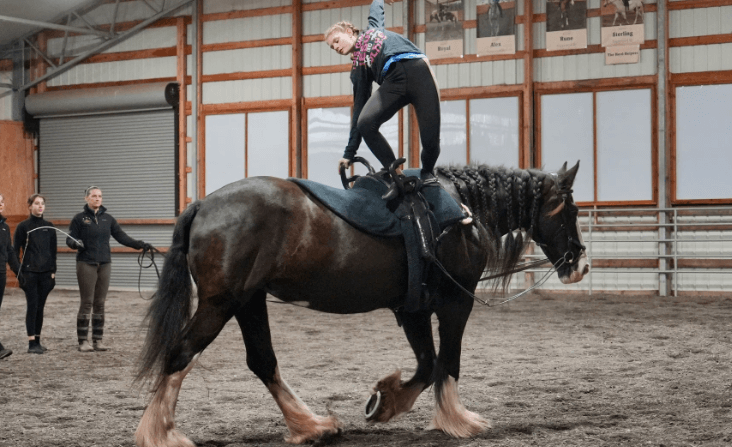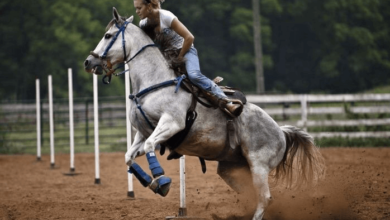How can I train my horse for cross-country riding?

Introduction
Cross-country riding is a thrilling and demanding discipline within equestrian sports, requiring both horse and rider to navigate varied landscapes at speed. Training your horse for cross-country involves physical conditioning, mental preparation, and developing a strong partnership between you and your horse. This comprehensive guide will take you through the essential steps to prepare your equine partner for the challenges of cross-country riding.
Understanding Cross-Country Riding
Before diving into training techniques, it’s crucial to understand what cross-country riding entails. This discipline is part of eventing, a “triathlon” of equestrian sports, which also includes dressage and show jumping. Cross-country tests the stamina, speed, and jumping ability of the horse across a course that includes various obstacles and terrains.
Assessing Your Horse’s Fitness Level
A thorough assessment of your horse’s current fitness level is essential before starting any training regimen. This evaluation will help tailor a fitness program that builds stamina and strength without risking injuries.
Developing a Training Plan
Creating a structured training plan is critical. This plan should include gradual increases in intensity and complexity, incorporating various exercises that mimic the challenges faced during a cross-country course.
Essential Skills for Cross-Country
Training your horse for cross-country riding involves several key skills:
- Stamina and Endurance Building: Long, slow rides increase cardiovascular fitness, while hill work builds muscle strength.
- Agility Training: Practice tight turns and varied footwork to improve agility.
- Jump Training: Regularly practice jumping exercises, focusing on both technique and confidence.
Safety First: Gear and Equipment
The right gear is essential for safety. This includes a well-fitting saddle, protective boots for your horse, and appropriate safety attire for the rider, like a helmet and body protector.
Building Confidence Through Exposure
Expose your horse to different environments and obstacles it will encounter in cross-country. This includes water crossings, ditches, and varied terrain types to build confidence and adaptability.
Conditioning Workouts for Peak Performance
Conditioning exercises should simulate the cross-country experience. Incorporate interval training, where periods of intense effort are alternated with periods of rest, to boost both stamina and speed.
Techniques for Effective Communication
Effective communication through cues and aids is vital. Training should reinforce responsiveness to leg, seat, and hand signals, ensuring smooth navigation through complicated courses.
Handling Diverse Terrain
Teach your horse to handle diverse terrains safely and confidently. Practice on soft ground, mud, hills, and flat surfaces. Each type of terrain offers unique challenges and learning opportunities.
Nutrition and Health Management
A well-balanced diet is crucial for maintaining your horse’s health and stamina. Regular veterinary check-ups ensure that the horse remains in optimal health throughout the training period.
Monitoring Progress and Adjusting the Training Plan
Regularly assess your horse’s progress and adjust your training plan accordingly. This might mean increasing the intensity of workouts or giving more rest days, depending on how your horse is responding.
Pre-competition Preparation
As you approach a cross-country event, tailor your training to reduce intensity, allowing your horse to rest and recover. Also, simulate the competition environment to acclimatize your horse to the sights and sounds it will encounter.
Cross-Country Riding Techniques
Master specific riding techniques to effectively guide your horse through a cross-country course. This includes learning the best approaches to different obstacles and mastering the balance between speed and safety.
The Role of the Rider in Cross-Country
The rider’s role extends beyond merely guiding the horse. Building a trusting relationship where the horse feels confident to follow your lead even in challenging situations is crucial.
Common Challenges and Solutions
Address common training challenges, such as refusal to jump or issues with water obstacles. Techniques such as positive reinforcement can help overcome these hurdles.
Advanced Cross-Country Training Tips
For experienced riders looking to enhance their skills, advanced training tips can provide additional strategies to improve performance.
Preparing for Event Day
Tips for the day of the event to ensure both you and your horse are relaxed, prepared, and ready to perform at your best.
Post-Competition Care
Proper care after a competition is essential to help your horse recover and prepare for future events. This includes cooling down properly, ensuring hydration, and assessing any potential injuries.
Conclusion
Training your horse for cross-country riding is a rewarding endeavor that enhances the bond between horse and rider and improves the athletic capabilities of both. With dedication, proper training, and care, your horse can excel in the exciting discipline of cross-country riding.







